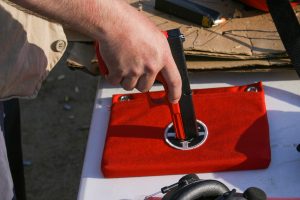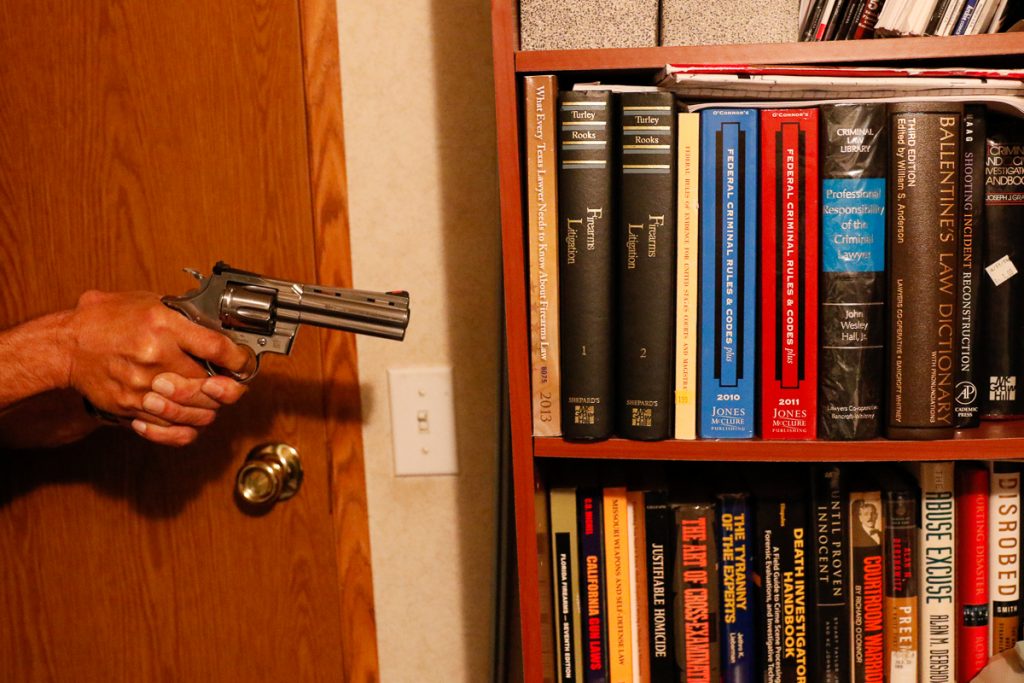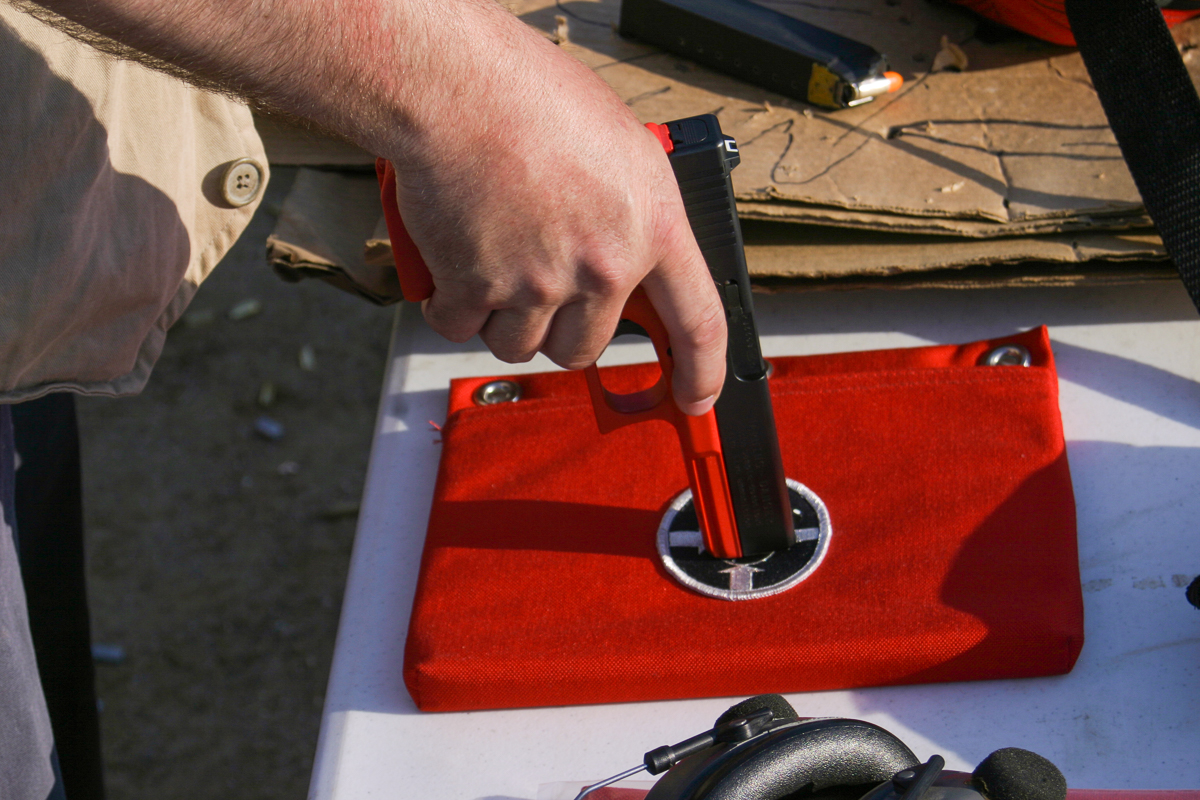
In our last segment, we talked about some options for “trigger time” if the coronavirus shutdown has kept you from getting to a shooting range. Dry-fire – “clicking the empty gun” – is always useful practice. Obviously, though, it must be done safely: it involves pulling the trigger on a lethal weapon in your own home.
As a PSA, here are the rules we give our students for that at my school (http://massadayoobgroup.com).




Dry fire is the just about the only practice many folks get these days. Especially city dwellers who don’t have a garage or a yard with visual and acoustic privacy. At CoolFire Trainer, we are proud to make just about the perfect product for #SemiAutomaticDryFire with your own real autoloader. Powered by compressed CO2 gas, our conversion barrel replaces your live fire barrel – the absence of the chamber effectively disables the pistol for safe practice. Each trigger pull releases the firing pin, and this energy opens a gas valve that extends a telescoping piston, which cycles your slide, and thereby resets your trigger mechanism for the next shot. What you experience is realistic recoil impulse that makes you grip the gun hard, and your sight picture gets disrupted so your eyeballs have to get to work. We often get asked about comparison to airsoft or to live fire – probably the best answer we get from our customers is “like light 9mm competition loads”. For the defensive crowd, this would translate as somewhere between 9mm and .22 LR, but close to the former. In sum, what you get with CoolFire Trainer is a unique combination of safe yet realistic practice at negligible operating cost. During these ‘Rona days, we’re busier than ever!
“+1” to this, folks. I know Jan and have worked with the product. CoolFire is top-notch gear.
One nice thing about revolvers. They conform to the KISS principle. You don’t need an aftermarket system to get them to provide good dry-fire practice. Nor do you have to put up with the hassle of manually cycling the pistol for every shot either. Instead, you just make sure that they are unloaded (or loaded only with dummy rounds, if you prefer) and then start your practice.
I can see why you included a picture of a revolver pointing at a safe backstop for this blog. The only thing is that most of us will not be using a nice Colt Python for dry-fire practice. Is that the 4.25 inch barrel version of the new Colt Python in the photo?
You have a good eye, sir; it is indeed.
Appears incomplete. If the individual who wishes to add dry fire practice to their regimen cannot safely clear a weapon, verify it is unloaded and carry out dry firing practice without requiring a bookcase or ballistic pad behind the aiming point and muzzle resting point if any, is it not logical to list eye protection, hearing protection, a first aid kit with a tourniquet/quik clot/combat gauze and a cell phone to summon help as requirements as well?
Friend John, Murphy’s Law is always lurking in the shadows. The more thorough shooting practice is, the safer. Mindful that none other than William Henry “Bill” Jordan, shooting expert of Border Patrol and military fame, is said to have had an inadvertent “dry-fire” discharge that killed a fellow BP officer, John A. Rector. I agree totally with your ideas, take them seriously, and will actually practice them from now on during dry firing. Odd that I so especially value my books that their preservation from ballistic perforation kind of takes first priority in my mind!
With the current available body Armour panels and steel targets a safe dry fire zone is easier than ever! A dedicated area behind the dry wall with a bag of sand or paver mix between the studs works. Think about what shots you need to take in your house and plan a backstop! Find an old book and hollow it out and harden it for a dedicated target.
TN_MAN I love revolvers, in large part because they have little to do with “work”. But it turns out that the new Colt Python 2020 is work-related after all: the trigger was developed using the TriggerScan instrument made by Dvorak Instruments, a sister company of CoolFire Trainer. I work at both. Needless to say, I now own a 4.25 inch Python and wanted to make it my IDPA gun this season… but then the virus happened 🙂 FYI my observations on this new Python are on Instagram on my whimsically named profile @dandelion_tactical. The TriggerScan story as told by Colt’s Justin Baldini is on Instagram @DvorakInstruments . Enjoy!
Would anyone care to comment about the iTarget system, pro or con? I would be practicing with the Glock 19, 26 & 43. Much obliged. https://www.itargetpro.com/
Looks useful, Jim, but I don’t believe I’ve ever worked with it, so I can’t give a personal comment. Hopefully, one of our other readers who has experience with it can chime in.
I have an iTarget system and it works well. The biggest pro to me is the price compared to other laser systems. The biggest con I can see is the limited number of calibers, though the major ones are covered. I do prefer double-action firearms when using it.
Dry Fire drills do cause negligent discharges, but in my studying out the ND’s in question, it seems to have been more a muscle memory mishap than a true ND where the gun owner “thought the gun was unloaded.”
After hearing/reading about quite a few ND stories (three with personal knowledge of the gun owners), I completely agree that there is a correlation between dry fires drills and ND’s.
The three people I know were and are safe gun owners, this ZI know for a fact, but their recent dry fire exercises seem to have set them up for each of their ND’s.
It appears that a habit of racking the slide and pulling the trigger becomes auto-mental and can cause and ND. My fix has been that I know rack the slide three times before doing a dry fire drill. (I know it sounds a bit much, or maybe too much, but so far, all those that are regularly doing dry fire excercises only after racking the slide three times have not had an ND.
Feedback has been extremely positive with the noted caveat of some commenting that it is too much of a hassle. I reply with what has become my stock answer for such comments, which is when can you fathom in any scenario that you would rack the slide three times before pulling the trigger on a bad guy?
At the very least, the purposed act of racking the slide over and over helps keep (I would say prevents) muscle memory being a problem and causing ND’s due to recent dry fire drills.
Comments are closed.